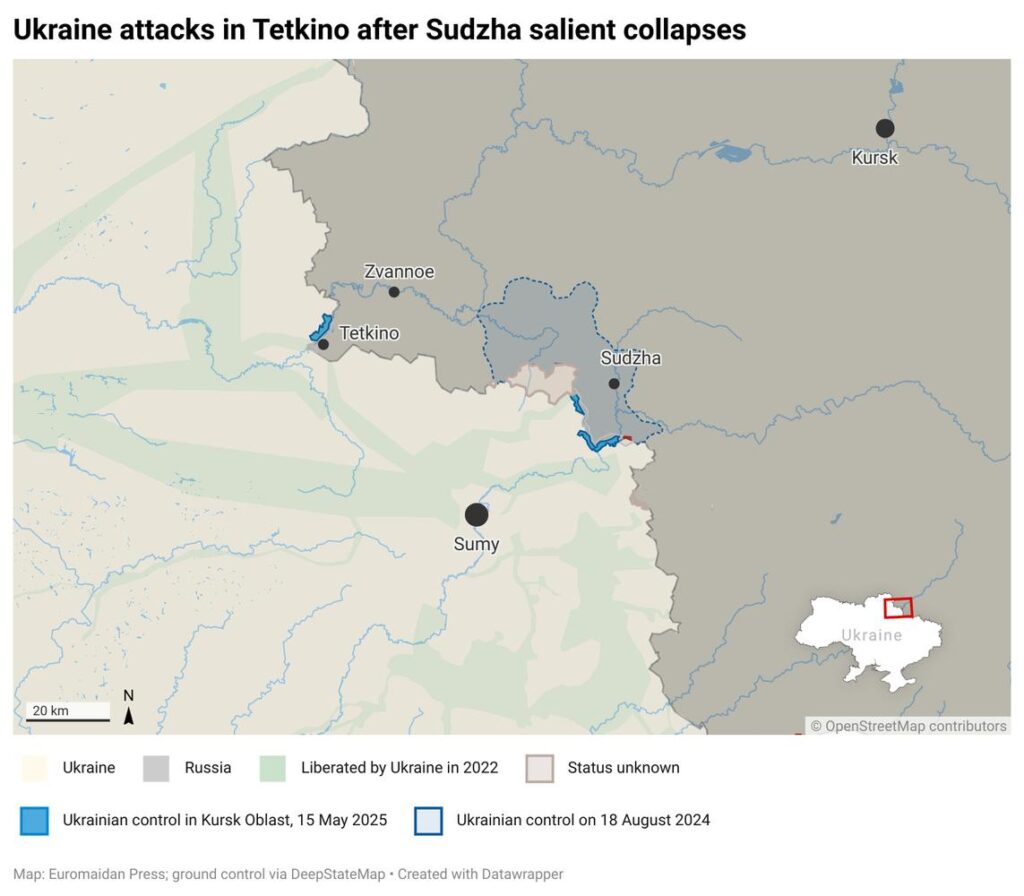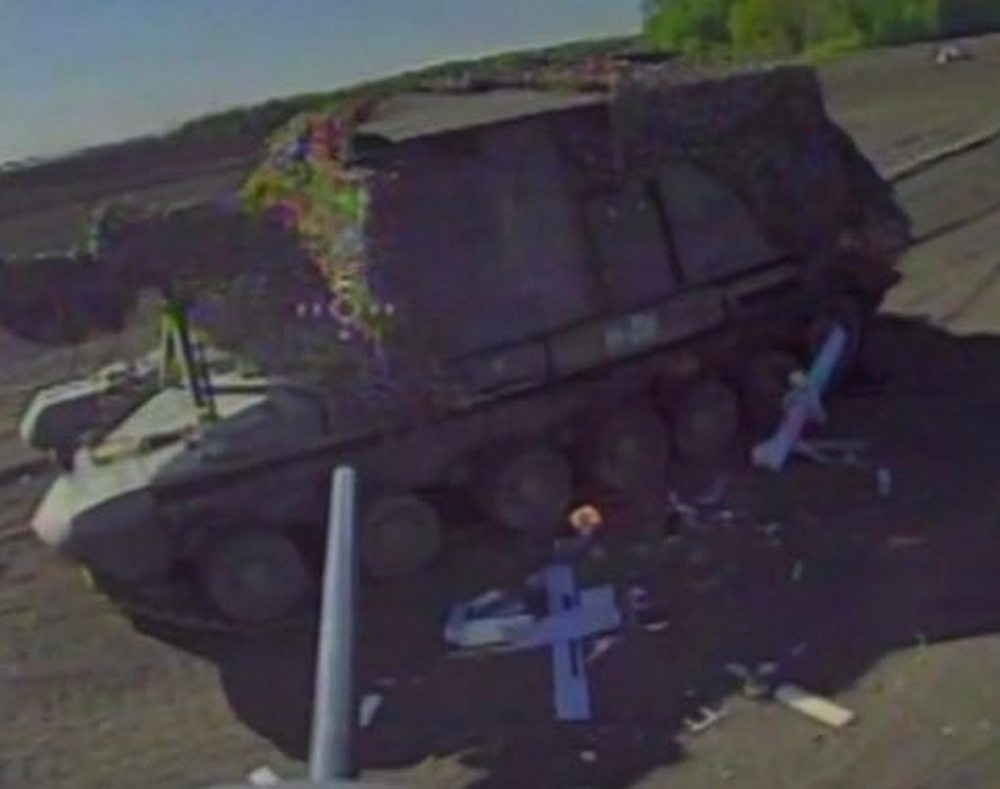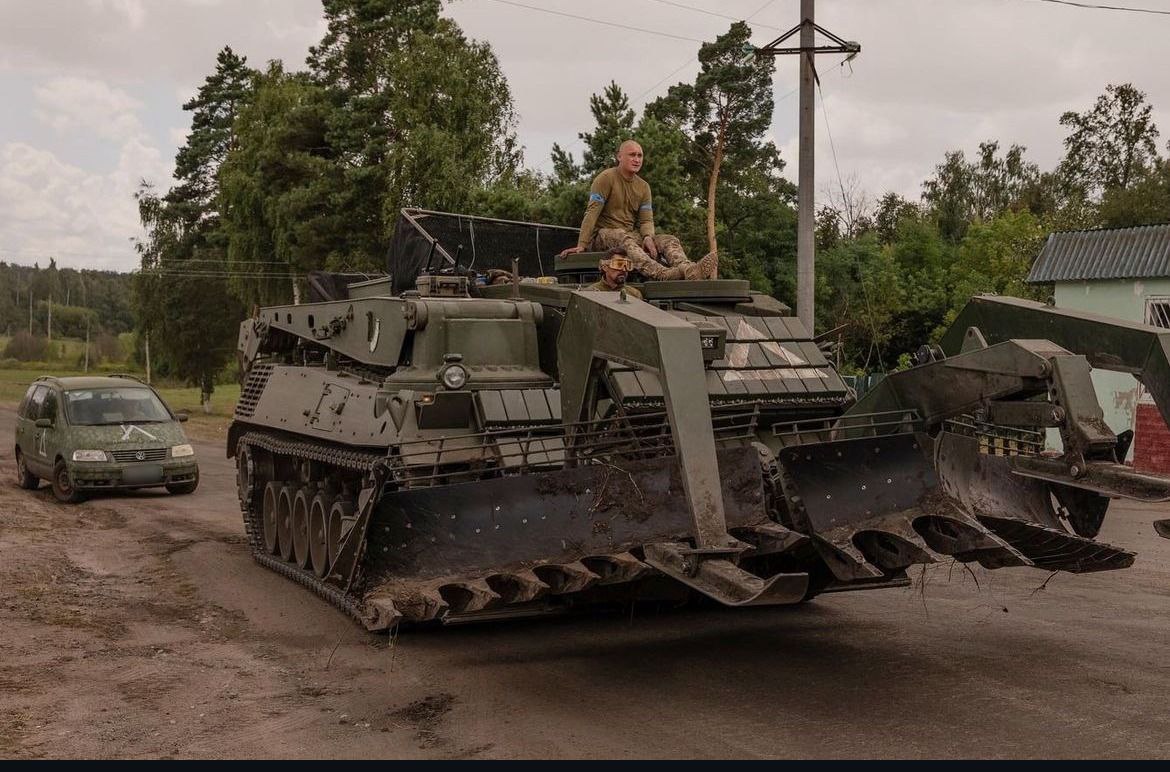Ukrainian troops are probing Russian positions around the border village of Tetkino (Tyotkino) in western Russia’s Kursk Oblast. It’s a risky mission, but the infantry has help. Ukrainian artillery and bombs are hitting the bridges leading to Tetkino, potentially strangling Russian supply lines—and giving the infantry a fighting chance.
A dramatic video that circulated online on Tuesday seemed to depict the moment some very unlucky Russian soldiers got blown up in a precise Ukrainian bombardment. The Russians appeared to be recovering equipment from immobilized vehicles stranded on a badly damaged bridge near Zvannoe, 24 km from the border village of Tetkino in western Russia’s Kursk Oblast.

They sensed they were in extreme danger. “Let’s take it and get the fuck out of here,” one of the Russians shouted. Moments later, the bridge exploded—and the camera fell to the ground.
The soldiers weren’t the target. The bridge over the Seym River was the target. “Ukrainian forces try to isolate enemy units near Tetkino and throughout the Glushkovo district of Kursk Oblast,” the Ukrainian Center for Defense Strategies explained on 6 May.
The Ukrainian attack that an unlucky Russian captured on video wasn’t the first attack targeting the Seym River bridge near Zvannoe. Ukrainian munitions—either aerial glide bombs or rockets from High-Mobility Artillery Rocket System launchers—badly damaged the bridge before 6 May.
But the span could still support Russians moving on foot. Ukrainian planners clearly weren’t happy—and organized a follow-up attack.
The aim is clear: to squeeze the flow of supplies to Russian troops defending Tyotkino from Ukrainian incursions. Two months after retreating from the 650-square-km salient they’d carved out of Kursk, 48 km east of Zvannoe, Ukrainian forces are trying again to seize the momentum along the border.
Hard lesson of Kursk incursion 1.0 learned
They’ve learned.
Trending Now
The previous salient collapsed after six months in part because the strong Ukrainian force in the salient—thousands of troops in a dozen or more battalions—never fully severed Russian supply lines across the Seym River to the north.
Ukrainian artillery and bombs struck several bridges, but the Russians repaired them—or erected temporary pontoon bridges.
Clinging to the Seym, the Russians were able to bring in an elite drone team, the Rubicon Center of Advanced Unmanned Systems, which launched hundreds of small drones at the main route for Ukrainian supply trucks.
In a bloody couple of weeks in late February and early March, Rubicon destroyed hundreds of Ukrainian vehicles. A wider Ukrainian retreat from Kursk was all but inevitable as the sky clouded with Russian drones.
“Rubicon employs advanced drone tactics,” independent analyst Andrew Perpetua explained. “They often target short sections of roads—100 to 300 meters long—and saturate these areas with drones. Attacks are frequently carried out in groups, sometimes striking the front, back, and sides of a vehicle almost simultaneously.”
But any competent drone team could’ve severed Ukrainian supply lines into Kursk, given the short distance—mere kilometers—between Russian lines and the most important road for Ukrainian convoys.
Having learned from this bitter experience, the Ukrainian brigades raiding around Tetkino are staying close to the border, keeping their supply lines short—less thaт 2 kilometers, so far—while also trying to do to the Russians what Rubicon did to the Ukrainians two months ago: defeat them by cutting off their supplies.
That means blowing up bridges and anyone on those bridges, such as that unlucky cameraman. And then blowing up the bridges again after the Russians repair them.


